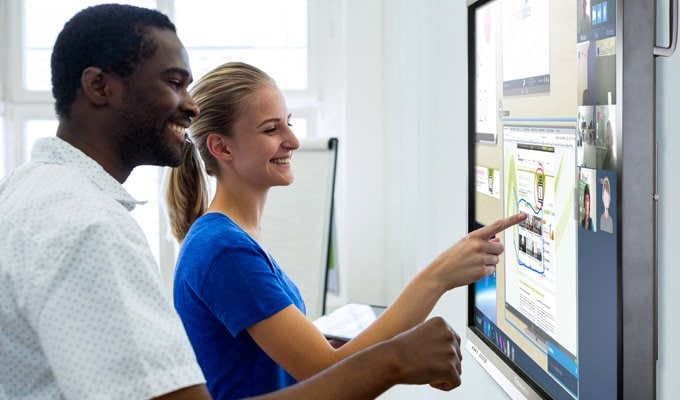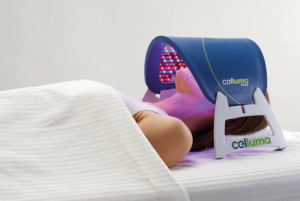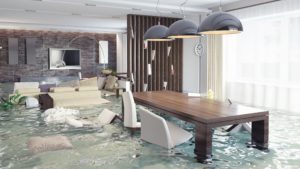
How to Choose the Right Touchscreen Display
As the world returns to the office – at least in a few capacity – one of the greatest concerns that companies have is ensuring that a given work set-up keeps employees safe, connected, happy, and able to doing their work. What an office setting will look like will change greatly, however, it is becoming more and more accepted that work is not really a place going, it’s a thing that you do. And as such the work-from-anywhere environment becomes increasingly more prevalent.
Because of this, touchscreen displays will play an important role in allowing digital collaboration between hybrid teams to keep in a seamless way. Until a few years ago, touchscreens were clunky devices that were too complex and difficult to use. But improvements in the accuracy of the touch interface have increased an individual experience greatly. You can now use them with the familiarity of your personal touch devices.
There are a number of great reasons for using digital devices in your sessions, but choosing which touchscreen display to get is not that straightforward. The touchscreen display market is becoming increasingly crowded with many different brands, screen technologies, sizes, and extras to choose from. And moreover also the space, software, methods, and people need to be taken into account before this investment is made.
Checklist for Touchscreen Displays
There are six main considerations we recommend going through for choosing the right touchscreen display:
What is the use case?
Which multitouch technology?
What screen size?
Should it be movable?
What computer to choose?
What video conferencing hardware is necessary?
Next to these general considerations, there are a few requirements that are important particularly for running MURAL:
Is the Operating System based on Windows 10?
To be able to install MURAL the display must managed with Windows 10. If the integrated PC doesn’t do this you can oftentimes insert a Windows 10 slot-in PC or connect a personal device that runs Windows 10.
Is the device powerful enough?
For a smooth MURAL experience we recommend utilizing a good graphics card with least 8GB of RAM (but preferably 16GB of RAM). This will make sure the touch experience is smooth.
Test out the display! When possible with a finish user.
Try quick drawing and moving sticky notes in MURAL to see how the latency (delay) of the screen is. The less latency the better, as we’ve seen screens not being used because of their high latency.
By asking yourself each of the questions below, you can make sure that you are making an investment in a touchscreen display that will allow your hybrid, remote, and in-person teams to collaborate effectively.
1. What is the Use Case?
Start with the question: what is the key purpose and use case for this touchscreen display? All too often we’ve seen touchscreens collecting dust because the reason for using it wasn’t clear right from the start.
Here are three different environments where we see great value for using touchscreen displays:
Ideation or Collaboration Room
The purpose of this type of space is to create ideas or solve complex problems collaboratively. Collaborators often work taking a stand and sessions typically last several hours to even full days.
Work here is often done in break-out groups of five to eight people where they will continue to work using one screen to solve a problem by using a variety of techniques. This set-up is very flexible and groups tend to be moved around different areas of the space. Touch experience, multi-touch (allows multiple visitors to work on the screen at the same time) and movability of the device are incredibly important here. The screen size can even be a little smaller. For instance, you can even do breakout group work with a 27” touchscreen monitor create on a hightop table.
Presentation Room
In a presentation room a presenter conducts a speech or presentation before an audience of attendees. This is the plenary area of a workshop or a presentation on itself.
The only person interacting with the screen is a presenter or facilitator, to show their presentation, synthesize work and make annotations. The bigger the screen the better here. It is sometimes even linked to a big projector for bigger groups. Multi-touch experience is not crucial. Plus the screen might maintain a set position.
Meeting Room
The purpose of meeting rooms is often to make decisions (on budgets or project plans for example). These meetings are usually short (max. 1 hour), attendees work standing up or sitting down, and can include 2 to 8 people.
Users typically need to display documents on the screen, sketch, annotate and all this really intuitive and simple manner.
Touch experience and multi-touch are incredibly important here, as well as different ways of connecting their personal devices.
2. Which Touch Technology?
Touchscreen technology is evolving rapidly, making the knowledge a lot better. Here is an overview of the 4 most common ones and their characteristics:
3. What Screen Size?
Touchscreen displays typically come in screen diameters of 55”, 65”, 75” and 85”. But also 27” touchscreen monitors including the Microsoft Surface Studio can work well.
Which one to choose depends a lot on the utilization case, how many people are in the session, and what lengths away from the screen they are simply.
The table below gives a rough estimate for how this pertains to the screen size:
If we bring this back to the use cases mentioned earlier, break-out sessions in innovation labs tend to be best served by the 55-65” screen, but the 27” Microsoft Surface Studio on top of a high table works just as well. For presentation rooms you should almost always need to go for the greatest screen size, or even hook up it to a projector with a larger screen size. And meeting rooms could best use a 55-75” screen, depending on the size of the area.
4. Should it be Movable?
The good thing about having the screen on a rolling stand is that its users can work in the best places to support whatever task is at hand. It allows individuals to be more agile and creative. Which is vital for teams in innovation labs. But it surely can also provide more flexibility to meeting and presentation rooms, when you are likely not going to equip each and every room with a touchscreen display.
5. What Video Conferencing Hardware is necessary?
In today’s connected and global world it is hard to imagine situations in which a feature like video conferencing will never be used. Therefore the final consideration is what video conferencing hardware such as a webcam, microphone and speakers need to be included with the display.
Some touchscreen displays come with webcam and microphone integrated. Others are easily upgradeable with a camera plus microphone such as the Huddly. Both of these options work great when collaborating with an inferior team near the screen.
For bigger meeting or presentation rooms you will have to consider multiple cameras and microphones for a capable video conferencing solution.

